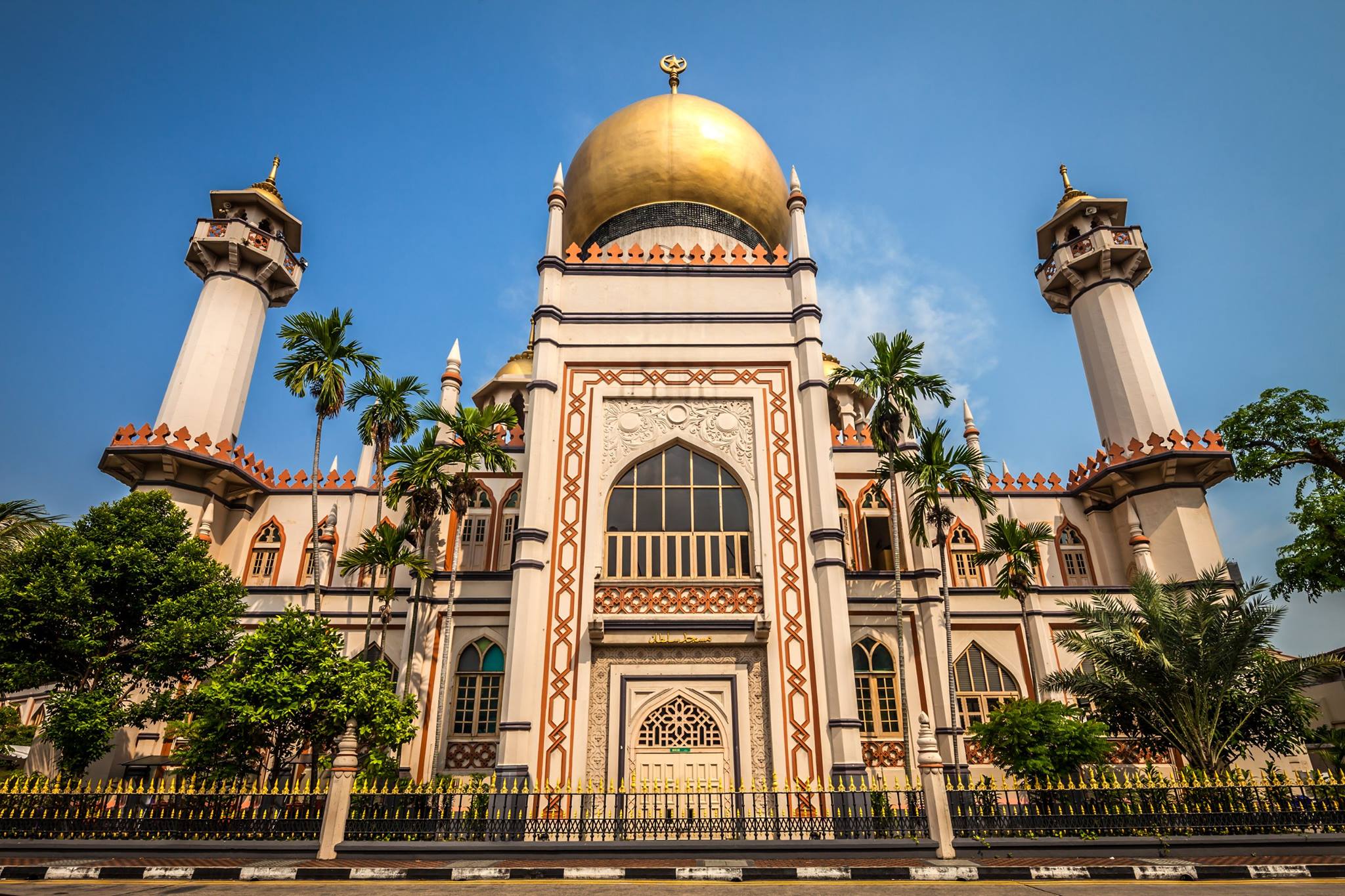Sultan Mosque
 📷: The Sultan Mosque (NHB)
📷: The Sultan Mosque (NHB)
In the heart of the historic Kampong Glam area are two large golden domes that can be spotted from afar. They belong to the prominent Sultan Mosque, also known as Masjid Sultan, at 3 Muscat Street.
The Sultan Mosque was formerly the royal mosque for Sultan Hussein Shah, the first Sultan of Singapore. Completed in 1826, the mosque was a single-storey brick structure with a double-tiered roof, an architectural feature typical of traditional Southeast Asian mosques. By 1924, the almost-century old mosque was in dire need of repairs. It was subsequently demolished and rebuilt from 1928 to 1932 in two phases. In 1987, an extension to the mosque, designed in a similar style to the main mosque, was built. The annex was officially opened by then-Prime Minister Goh Chok Tong on 10 Jul 1993.
The present Sultan Mosque stands on the site of the original mosque, and continues to face the direction of Mecca. Its compound is enclosed by a boundary wall of cast-iron railings, and its front and back façades (facing Muscat Street and North Bridge Road respectively) are covered in exquisite arabesque mouldings. The entrance foyer is supported by four columns with corbels reminiscent of the design of the ‘chajja’ (projecting eave). All around, one can see windows of different arch designs, and at the top, Islamic merlon cresting beautifully lined the perimeters of the roof parapet. Each corner of the mosque sits a minaret capped with a miniature dome; and within each minaret, lies a staircase that leads up to a balcony from which the azaan (prayer call) would traditionally be issued. Today, the prayer call is broadcasted through speakers.
The Sultan Mosque’s design was heavily influenced by the Indo-Saracenic style, which combines traditional Indian and Islamic elements with European architectural features. The two golden domes, each topped by a crescent moon and a star, are atop the eastern and western ends of the prayer hall. One dome caps the main entrance foyer, while the other is atop the Mausoleum where the late Sultan Alauddin Alam Shah (the grandson of Sultan Hussein Shah) and other members of the royal family are buried. The base of each dome is decorated with a circular band of sawn-off ends of glass bottles, which are donated by less financially privileged members of the Muslim community – the Sultan had wished for all Muslims, regardless of their financial backgrounds, to be included and be able to contribute to the rebuilding of the mosque then.
Within the mosque, the rectangular prayer hall is defined by 12 octagonal columns. The mihrab, or pulpit, is framed by a lancet-shaped arch with gold-plated floral motifs, topped with a panel of calligraphy. This two-storey hall can hold up to 5000 worshippers. The mosque served as a regional stopover for Muslim pilgrims on their hajj in the past, but is now closed to visitors except for prayers, though one can still enjoy its gorgeous architecture from outside.
Today, the Sultan Mosque remains an important focal point for our Muslim community. Long considered by many as the unofficial national mosque of Singapore, the Sultan Mosque was gazetted as a National Monument on 8 Mar 1975. It is a living reminder of the thriving Muslim communities living in the area during the British colonial period, as well as the Malay royalty who was once housed in the nearby Istana Kampong Glam area.
#SultanMosque #Mosques #Singapore #Heritage
🎥: Watch the aerial view of the Sultan Mosque here : https://www.youtube.com/watch?v=7xW-GPASieo
🧐: Read more about the Sultan Mosque here : https://www.roots.gov.sg/en/places/places-landing/Places/national-monuments/sultan-mosque

